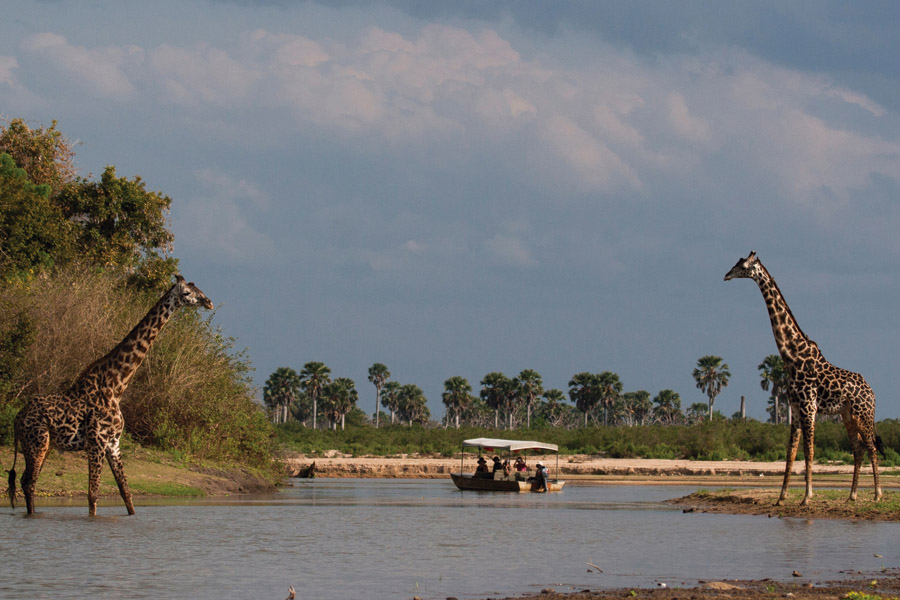Selous Game Reserve, Tanzania
🦁 Selous Game Reserve: Tanzania’s Hidden Wilderness
Selous Game Reserve is a place where untamed nature thrives, offering one of the most authentic African safari experiences. Often overshadowed by the more famous Serengeti, Selous is a massive, wild expanse in southern Tanzania—home to vast populations of elephants, hippos, and a treasure trove of wildlife, all thriving in their natural habitat.
🐘 Wildlife: A True African Safari
Selous is a true haven for wildlife, with a wide variety of species that makes it one of Tanzania’s top safari destinations. With fewer visitors than more famous parks, the wildlife here remains unspoiled and abundant.
🦁 Iconic Species:
-
African elephants – Selous boasts one of the largest elephant populations in Tanzania
-
Lions – Frequently spotted on game drives, often hunting along the rivers
-
Leopards and Cheetahs – Rare but seen in the reserve’s more remote corners
-
African wild dogs – The endangered species is a highlight for those lucky enough to spot them
-
Hippos and crocodiles – Found in abundance along the rivers
-
Giraffes, buffaloes, and wildebeest – The typical safari megafauna
Selous also has a high concentration of birdlife with over 400 species, including the vibrant malachite kingfisher, white-backed vulture, and pale-chanting goshawk.
🏞️ Scenery: Rivers, Woodlands, and Savannahs
The reserve’s diverse landscape makes it a photographer’s paradise. The Rufiji River is a central feature, flowing through Selous like a lifeline, creating lush wetlands that support abundant wildlife. Surrounding this river system are open plains, dense woodlands, and dry savannahs, creating a range of ecosystems for exploration.
🌍 Scenic Highlights Include:
-
Rufiji River – The life force of the reserve, offering scenic boat safaris and abundant wildlife
-
Lake Tagalala – A tranquil spot for boat rides, where elephants often come to drink
-
Miombo Woodlands – Home to diverse wildlife and bird species
-
Savanna Plains – A great place to witness predator-prey action and herds of grazers
The beauty of Selous lies in its sheer vastness—it's a place to disconnect from the world and lose yourself in the wilderness.
🚤 Activities: A Multi-Dimensional Safari
Unlike the classic game drives of Serengeti or Ngorongoro, Selous offers a multi-dimensional safari experience, giving travelers a chance to immerse themselves deeply in the environment.
-
🦓 Game drives – Early morning and late afternoon drives offer the best chances to see wildlife
-
🚣 Boat safaris – Explore the Rufiji River by boat for an intimate, peaceful experience with crocodiles, hippos, and waterbirds
-
🚶 Walking safaris – Led by expert rangers, these safaris allow you to experience the land up close and learn about smaller details often missed during vehicle safaris
-
🐦 Birdwatching – With over 400 species, Selous is a premier spot for bird enthusiasts
The boat safaris on the Rufiji River are particularly unique, offering the rare opportunity to glide silently past wildlife while watching them interact with the water.
🛖 Where to Stay: Remote and Exclusive Accommodations
Selous is known for its secluded, luxurious accommodations, where visitors can enjoy an exclusive safari experience with only a handful of other guests. Most lodges are eco-friendly, integrating seamlessly with the surrounding nature.
🏨 Top Accommodation Options:
-
Siwandu Camp – A luxurious, eco-friendly camp with riverfront views and intimate safari experiences
-
Selous Riverside Camp – Exclusive, tented accommodation with game drives and boat safaris
-
Zerem Camp – A more rustic and intimate experience, focusing on walking safaris and canoeing
-
Sand River Selous – A high-end lodge offering comfort in the heart of the reserve
While luxury tented camps and bush lodges offer an indulgent experience, the focus on nature and conservation ensures that Selous retains its authenticity.
🚗 Getting There: Remotely Accessible
Selous is in a remote part of southern Tanzania, making it a perfect destination for those seeking peace and seclusion. However, it is still relatively accessible.
✈️ By Air:
-
Selous has several airstrips, with scheduled flights from Dar es Salaam or Zanzibar to the reserve’s main airstrip, Mtemere Airstrip.
-
Fly-in safaris are the most convenient way to reach Selous.
🚗 By Road:
-
The reserve is 5–6 hours by road from Dar es Salaam, though the roads can be challenging, especially during the rainy season.
📅 Best Time to Visit: Dry Season Safari
The best time to visit Selous is during the dry season (June–October). This is when wildlife congregates around the river, making it easier to spot animals. The landscape is more open, and the weather is ideal for safaris.
-
Dry Season (June–October): Best for game drives and boat safaris
-
Green Season (November–May): Lush scenery and fewer crowds, but some roads might be impassable after rains
🌍 Why Visit Selous Game Reserve?
Selous offers something that few other African reserves can: the opportunity to experience a wilder, less-crowded safari. With its rich wildlife, varied landscapes, and remote setting, it’s an underrated gem that rewards those who make the effort to visit. Whether you’re seeking exclusive luxury, authentic nature experiences, or a chance to see wildlife in its purest form, Selous delivers.


